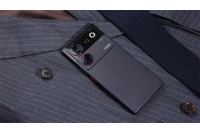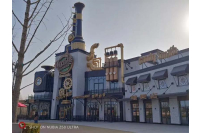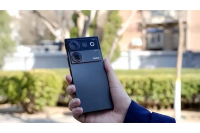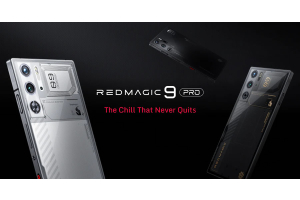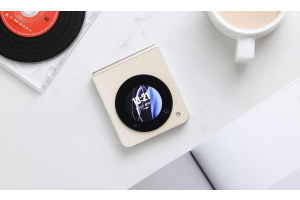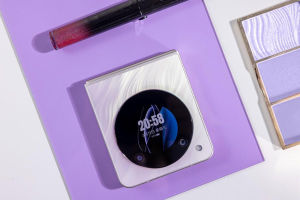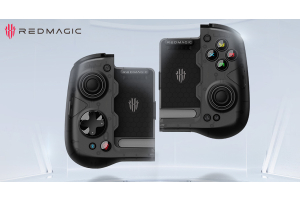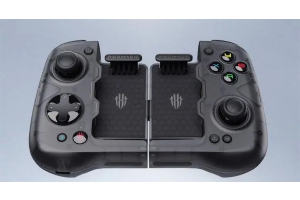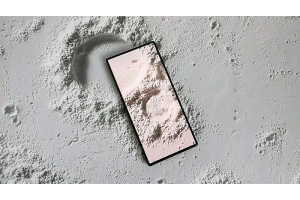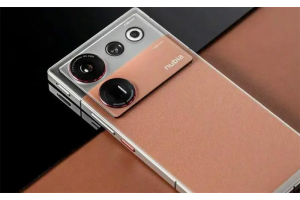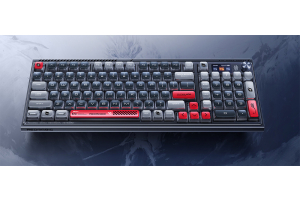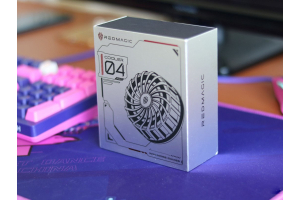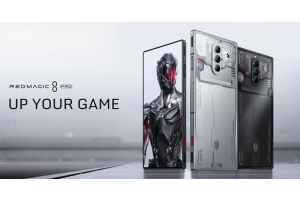Nubia Z50 Ultra Review: High-End Flagship Phone With Advanced Camera Technology
In the current mobile phone market, the "Ultra" suffix is often given to the most high-end models in a series. However, for Nubia, this position has always seemed to be vacant until today.
Three months after the release of the Z50, Nubia released its latest flagship model, the Nubia Z50 Ultra. In the pre-release information, Nubia also referred to it as the "most comprehensive and Ultra" ultimate model. So how does it actually perform?
In terms of appearance, the Nubia Z50 Ultra continues with the previous square design. I believe everyone has their own thoughts about such a sharp design. But for myself, this style brings an unexpected sense of solemnity, which is very suitable for the flagship positioning of the device itself.
The back of the phone still uses the familiar AG matte process, and the main design changes appear in the rear camera module. Here, Nubia places two different focal length main cameras of 35mm and 85mm above and below in the upper left corner of the phone, with a light matte dividing line in the middle that creates two different body textures. To the right of the 35mm main camera, the ultra-wide-angle lens and flash are placed in sequence. The main camera uses a "red ring" design, which is striking and very delicate.
When you open the front screen, the improvement in visual appearance will be even more apparent. Thanks to the under-screen front camera design, the front screen of the Nubia Z50 Ultra achieves a complete flat screen. The screen of the Nubia Z50 Ultra is a 6.8-inch AMOLED flexible straight screen, with a maximum refresh rate of 120Hz, a screen ratio of 20:9, a resolution of 2480*1116, a maximum touch sampling rate of 960Hz, support for DCI-P3 100% color gamut, and support for dual eye protection with 1440Hz PWM high-frequency dimming and DC dimming.
The OLED flexible screen of the Nubia Z50 Ultra adopts advanced COP packaging technology, with a screen-to-body ratio of 93.7%, and industry-leading ultra-narrow four-micro borders, with the left and right borders as narrow as 1.48mm, the bottom border (chin) as 2.28mm, and the top border (forehead) as 1.68mm. This makes the front appearance of the Nubia Z50 Ultra almost only a screen, allowing users to enjoy a stunning global view.
The Nubia Z50 Ultra uses the industry's first independent pixel driving technology in the screen area of the under-screen camera. Each pixel is individually controlled, resulting in a more delicate and clear display compared to traditional one-to-many (pixel) technology. At the same time, distributed transparent circuit design is applied to ensure the display effect and transparency of the front camera area under the screen. In practical use, the Nubia Z50 Ultra provides a satisfactory selfie experience.
In addition, the Nubia Z50 Ultra also uses the UDC PRO+ screen display chip to optimize the transition effect between the under-screen front camera area and other areas of the screen through algorithm optimization, making the overall display more accurate and delicate. Through actual testing, it can be seen that the under-screen camera of the Nubia Z50 Ultra is almost imperceptible to users, whether displaying images or text content, and the display effect of the camera area under the screen is also comparable to the surrounding area.
Image is still the most significant breakthrough of the Nubia Z50 Ultra. It has a front 16 million pixel lens, a rear 64MP Sony IMX787 humanistic main lens, a 50MP 116° ultra-wide-angle lens, and a 64MP telephoto lens. From the parameters, this set of image configurations is still very good, with both the main lens and telephoto supporting OIS optical stabilization. In addition, the focal lengths of the main lens and telephoto are also carefully designed, with the main lens following the equivalent 35mm focal length and the telephoto using an equivalent 85mm focal length, satisfying users' needs for full-scene and full-focal-range use.
For the phone's main camera, the 35mm lens is undoubtedly very special. The equivalent focal length of the common phone's main camera is generally around 26mm, because in the past, phones were all single cameras, and a 26mm equivalent focal length could have both the field of view of the main angle and the wide-angle, so today the main camera being 26mm has become a default fact. This is why the Nubia Z50 Ultra using a 35mm main lens seems a bit special.
In the circle, the 35mm lens is known as the "humanistic eye," and it can be said to be the favorite focal length of portrait photographers and the lens that is best at telling stories. This brings us to the advantages of the 35mm lens. Compared to the traditional 26mm main lens, 35mm is more convenient for users to compose, whether shooting people or objects, it will make the subject more prominent and the photo more artistic. Also, when taking portraits, at the same position, 35mm is closer to the subject and will not produce a feeling of oppression on the subject.
The 85mm equivalent focal length used in the Nubia Z50 Ultra's telephoto lens is also favored by photographers. In daily shooting, a telephoto lens of about 5x often appears too far, making composition inconvenient. However, in the equivalent 85mm focal length, the composition space is more free, the distance between the shooting subject is more comfortable, and more relaxed. At the same time, it can also make the photos more three-dimensional and have a sense of depth in portrait photography, making the characters more prominent.
It is worth mentioning that the Nubia Z50 Ultra also specially selects the most important impression color in people's minds to create a brand-new impression color, which will optimize the blue sky, green ground, and human skin color, and better express the emotions of photos through a unique humanistic color.
In order to provide a better experience for humanistic imaging, the Nubia Z50 Ultra also adds a humanistic street shooting mode. Simply turn on the sliding switch on the right side of the body to quickly activate it, and manually adjust the background blur effect. With the support of the Sony IMX787 and f/1.6 aperture, the overall blurring effect is comparable to that of a DSLR, which can effectively isolate the portrait from the background, making the portrait more prominent, the sample photos more atmospheric, and also allowing the power of the 35mm lens to be fully utilized.
In addition, the main camera of the Nubia Z50 Ultra is a customized Sony IMX787 sensor, with an ultra-high resolution of 64 million pixels, and the image quality is even clearer. In this set of photos, the building details are very clear, and the texture of the wall is also clearly visible. Moreover, the customized 35mm optical lens has a smaller field of view, so the distortion of the photo is also lower, and the edge quality can be guaranteed.
In terms of night scenes, thanks to the large sensor, night scene algorithms, and the built-in humanistic color imaging system, the Nubia Z50 Ultra's night scene samples also perform well, with bright and pure pictures, few noise, and more true-to-life colors. In addition, the highlights are not overexposed, and there are details in the dark areas, with overall good quality. Additionally, the main camera is equipped with OIS optical image stabilization, so the success rate of night scene photos is high, and clear night scene samples can be easily taken.
Next is the telephoto lens. The Nubia Z50 Ultra is also equipped with a 64MP telephoto lens. As can be seen from the samples, the details are still clear and the colors are more realistic, with good actual viewing experience. Moreover, since the telephoto end also supports OIS stabilization, it is more stable and clear when using telephoto shooting compared to some phones that do not support stabilization.
Overall, as a flagship product that focuses on imaging, the performance of the Nubia Z50 Ultra is good. Whether it's the industry's first 35mm humanistic lens or the IMX787 sensor customized in collaboration with Sony, it's evident that Nubia Z50 Ultra is sincere about its imaging capabilities. Friends who like taking photos are recommended to pay attention to it. In terms of configuration, Nubia Z50 Ultra uses the combination of the second-generation Snapdragon 8 processor + LPDDR5X memory + UFS 4.0 flash memory, which is probably the top-level performance configuration among current Android devices.
After discussing the hardware parameters, as usual, let's run some tests on the Nubia Z50 Ultra. We will use our old friends, AnTuTu, GeekBench, and 3D Mark. As seen in the results, AnTuTu scored 1283622 points, GeekBench6 single-core score was 1901 points, multi-core score was 5383 points, and 3D Mark Wild Life Extreme scored 3752 points. These scores have already reached the average level of the second-generation Snapdragon 8 models.
Of course, the benchmark score is only a theoretical value, and real game testing is the real deal. This time, we still choose "Peace Elite" and "Genshin Impact" as medium and heavy loads for testing, respectively. We used the setting of ultra-high + 60 frames for image quality and tested it for 30 minutes. As can be seen, in the "Peace Elite" test, the average frame rate of the Nubia Z50 Ultra reached 59.9fps, which remained close to full frame throughout the game, and the overall gaming experience was very smooth. In the "Genshin Impact" test, the average frame rate of the Nubia Z50 Ultra was 59.3fps, and the frame rate curve only had a slight fluctuation. The overall gaming performance was very smooth. Overall, with the support of the second-generation Snapdragon 8 processor + LPDDR5X memory + UFS 4.0 flash memory, the performance of the Nubia Z50 Ultra has surpassed most models in the market and meets our requirements for flagship phone performance.
The Nubia Z50 Ultra has a built-in 5000mAh large-capacity battery (typical value), supports 80W super-fast charging, and is compatible with QC4+, PD, and other fast charging protocols, making it a powerful device. To better understand the Nubia Z50 Ultra's endurance level, the author conducted a 5-hour heavy endurance test. In the current room temperature environment, the phone was connected to the office Wi-Fi, and the Bluetooth and positioning were turned off, and the screen brightness and volume were set to 50%. As can be seen, with a full charge, the Nubia Z50 Ultra had 52% of the battery remaining after 5 hours of heavy usage, which was relatively high compared to other models we tested. Among them, one hour of "King of Glory" high frame rate gaming consumed 9% of the battery. For heavy gamers, it can maintain a long gaming experience. Overall, for a flagship phone with top-notch performance, this battery performance is quite balanced, and it has no problem with normal usage throughout the day. If you want to have a strong endurance performance, fast charging is also essential. The Nubia Z50 Ultra uses an 80W fast charging solution, and for its charging performance, I conducted a 30-minute test, and the result is as follows.
Overall, the 5000mAh large battery has helped the Nubia Z50 Ultra achieve impressive battery life performance. At the same time, the 80W wired flash charging ensures the Nubia Z50 Ultra's ability to quickly recharge, undoubtedly meeting the requirements of most consumers for smartphone battery life. Overall, the Nubia Z50 Ultra's design continues the classic design of the previous generation, with a processor equipped with Qualcomm's strongest second-generation Snapdragon 8, a built-in 5000mAh battery, and a balance between performance and battery life. The biggest highlight of the Nubia Z50 Ultra is in the imaging aspect, with its 35mm and 85mm dual primary cameras composed of customized lenses and high-pixel sensors. In my testing process, the effect of using it to take portraits is really great, with natural blurring and the ability to capture characters with a sense of story. In summary, the Nubia Z50 Ultra is a flagship imaging device with excellent performance, which has great appeal to both performance enthusiasts and imaging enthusiasts.
